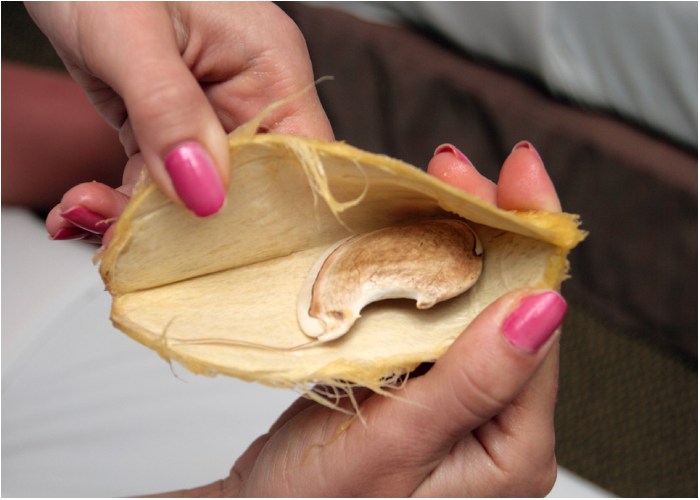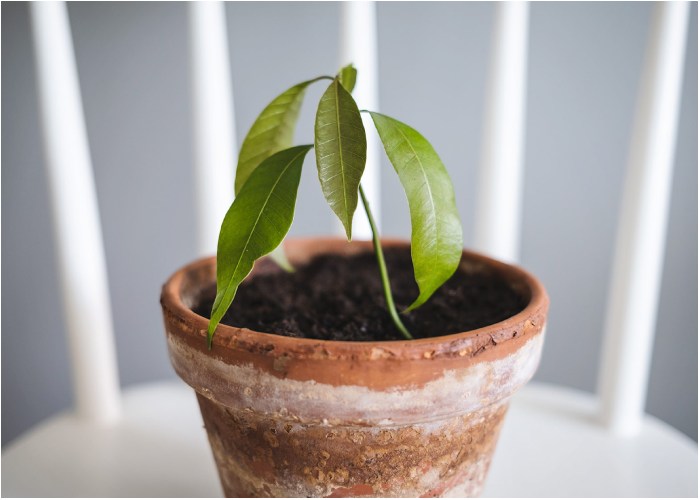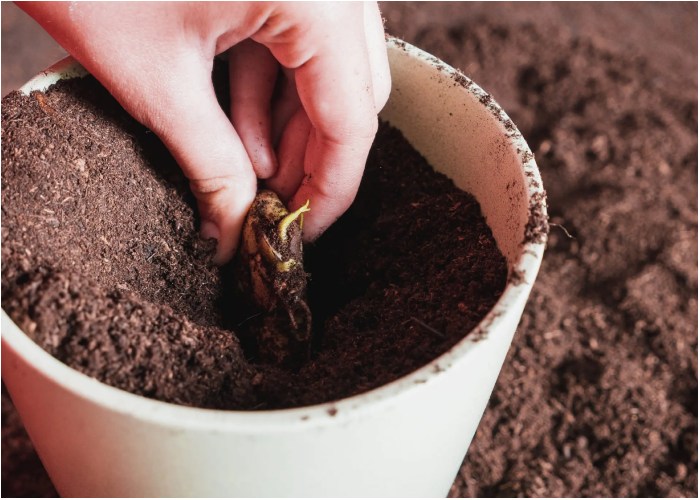The next time you finish a mango, save the seed and try growing your own mango tree. Though the process can be challenging, it’s a rewarding way to enjoy home-grown fruit. Mango seedlings can be grown in containers or outdoors, depending on your climate, and should be planted during spring or summer when the growing season is in full swing. While mango trees can thrive indoors under optimal conditions, they do best in warmer climates, particularly in USDA zones 9 to 11.
Preparing Your Mango Seed for Planting
Start with a ripe mango, as the seeds are only viable for a few days after the fruit ripens. The seed should be firm and white—avoid using seeds that are shriveled or brown, as they likely won’t germinate. First, remove the seed from its husk, which is the stringy, pulpy material surrounding it. Carefully cut a small hole in the thin edge of the husk, then use scissors to pry it open and extract the seed. This step is crucial for giving your seed the best chance to grow into a healthy mango tree.

Creating the Ideal Environment for Mango Seedlings
To ensure your mango seedling thrives, you need to provide the right growing conditions. Mango seedlings prefer bright locations but should be shielded from direct sun until they mature. Indoors, a south-facing window works well; outdoors, place the seedling in filtered sunlight, such as under a leafy tree. Mature mango trees require at least six to eight hours of direct sunlight daily to produce fruit. Mango trees aren’t picky about soil type as long as it’s well-draining. The ideal soil is loamy, rich in organic matter, and has a pH range between 5.5 and 7.5. Given that mangoes are tropical plants, they thrive in warm temperatures between 65 and 90 degrees Fahrenheit. They’re hardy in USDA zones 9 to 11, which include southern Florida, California, Hawaii, and Puerto Rico. If exposed to temperatures below 30 degrees Fahrenheit for extended periods, mango trees can be severely damaged or die.
Caring for Your Growing Mango Tree
Water your mango seedling consistently, keeping the soil evenly moist. As the roots develop, you’ll need to water less frequently, but always water thoroughly so that excess water drains out of the pot. This ensures that the roots remain healthy and free from rot. Fertilizing is unnecessary until the seedling has several sets of leaves and has filled its pot with roots. At that point, you can use a balanced fertilizer that provides nitrogen, phosphorus, potassium, and micronutrients.

Addressing Common Problems
Mango trees are susceptible to certain pests and diseases. Powdery mildew, which appears as a white, powdery substance on leaves, is common and usually results from poor air circulation or insufficient light. This can be treated with neem oil or horticultural oil. Another issue is fungal leaf spot, which occurs when leaves remain wet overnight. Improve air circulation and water early in the day to prevent this problem. Mites and aphids are common pests, especially in hot, dry conditions. Regularly spraying your plant with water can help manage these pests. For more serious infestations, use insecticidal soap or horticultural oils. Mealybugs and hard scales, which are harder to control, can be removed manually with a toothbrush and rubbing alcohol.
Transplanting Your Mango Tree
Once your mango seedling outgrows its pot, it’s time to transplant it into a larger container or outdoors. Wait until spring or summer, when the plant is in its active growing phase. When choosing a new container, ensure it has drainage holes and is only one size larger than the current pot. This prevents the soil from retaining too much water, which could lead to root rot. To transplant, loosen the plant from its current pot and carefully remove it, keeping the root ball intact. Place fresh potting soil in the new container and set the plant at the same depth as before. Fill in the surrounding space with more soil and water thoroughly. If you’re planting outdoors, choose a location where temperatures stay above 55 degrees Fahrenheit year-round. Dig a hole the same depth as the root ball and two to three times wider, then place the plant in the hole and backfill with soil. Water the plant regularly, ensuring that young mango trees never dry out.

Patience Pays Off
Growing a mango tree from seed requires patience. It can take five to eight years for a seed-grown mango tree to bear fruit. If you’re eager to enjoy homegrown mangoes sooner, consider purchasing a sapling from a nursery, which may produce fruit within four years. However, growing a tree from seed offers the unique satisfaction of nurturing a plant from the very beginning.